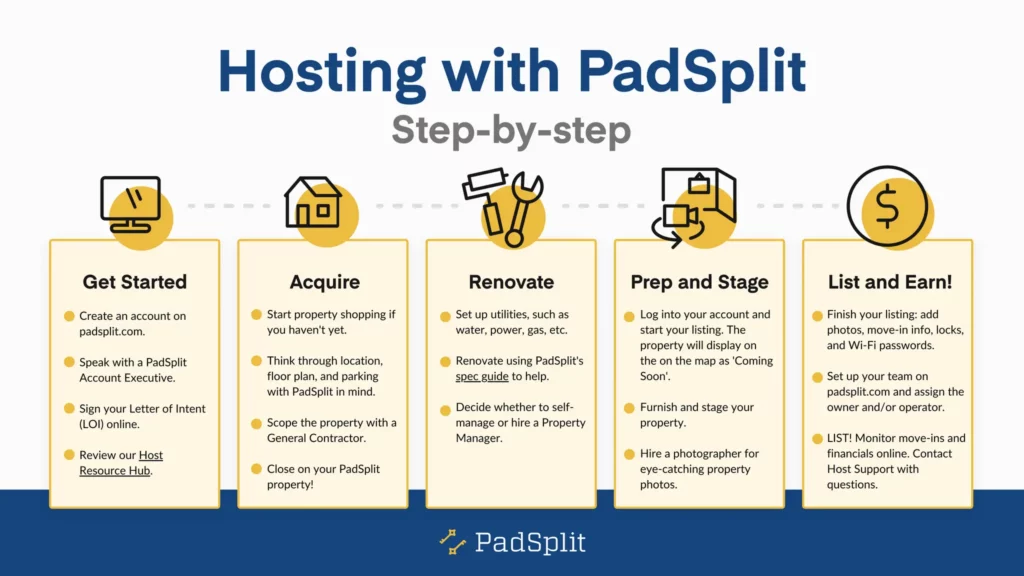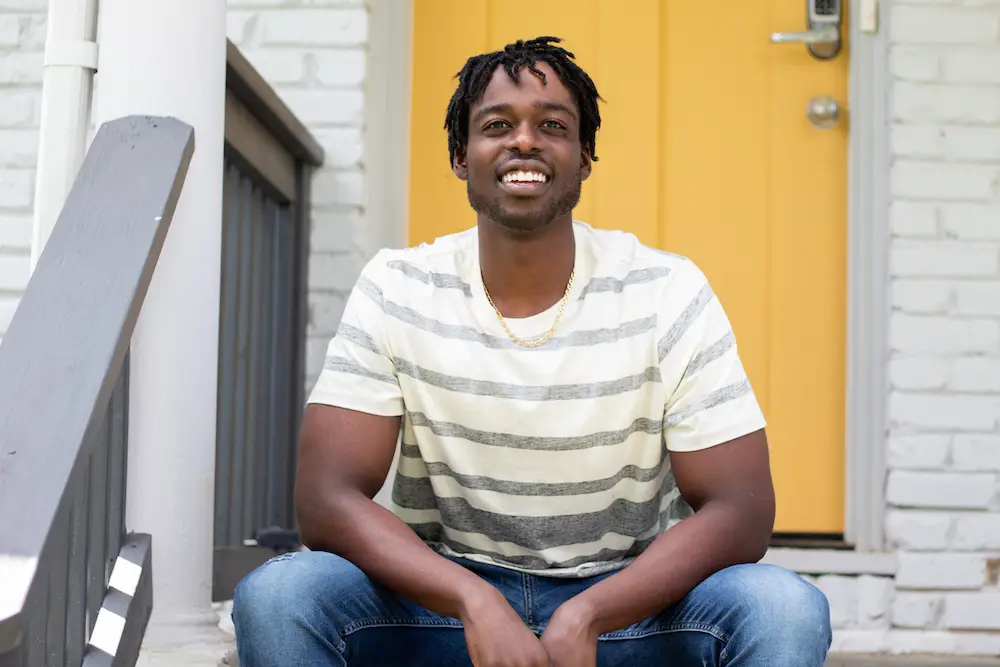The affordable housing shortage in the United States has long seemed like an impossible problem. Millions of hard-working individuals urgently need homes, but every proposed solution often requires too much time or public funding. The question remains: can real estate investors play a meaningful role in helping the growing number of Americans who can’t afford a place to live?
PadSplit believes the answer is yes. With a unique shared-housing model, PadSplit offers a fast, flexible, and affordable solution by converting unused spaces in larger homes into safe, single-occupancy rooms. Through PadSplit’s innovative technology platform, property owners and investors can provide accessible housing while earning higher returns, creating a model that balances profitability with social impact.
According to PadSplit Founder and CEO Atticus LeBlanc, “Our thesis is that we can make affordable housing possible by also making it profitable.” This approach enables investors and property owners to “do well while doing good”—a philosophy that has propelled PadSplit to the forefront of affordable housing innovation.
The affordable housing crisis: Why it matters
The need for affordable housing has reached critical levels. According to the National Low Income Housing Coalition, the U.S. faces a shortage of over 7.3 million affordable and available rental homes for extremely low-income renters. This shortage has only grown more severe, underscoring the urgency of the affordable housing crisis.
In 2023, a record-high of 653,104 people experienced homelessness on a single night in January, marking a 12.1 percent increase over the previous year. Many essential workers—nurses, teachers, and service industry employees—are forced to live far from their workplaces due to high rent costs, resulting in housing instability that disrupts communities and local economies.
PadSplit addresses this need by converting existing properties into affordable, single-occupancy rooms. As LeBlanc puts it, “The workers who serve our communities also deserve the opportunity to live in them.” By leveraging existing housing stock, PadSplit provides a faster and more efficient solution that doesn’t rely on taxpayer funding, allowing cities to house more people without the need for new construction.

How PadSplit is addressing the problem
PadSplit’s model reduces the traditional barriers to housing by including all living costs—rent, utilities, and internet—in a single weekly payment. This billing cycle is tied directly to members’ pay periods, ensuring affordability and ease of payment. “If every fee you can think of is baked into that same payment, it is much more likely to be made on a consistent basis,” says LeBlanc.
With PadSplit, renters gain more than just a place to live—they become part of a community that prioritizes stability and financial growth. Members benefit from flexible payment options and no minimum credit score requirements, which helps them build a financial track record. As LeBlanc explains, “Our goal is to create a world-class marketplace that is literally solving the affordable housing crisis one room at a time, and to be able to create access to economic opportunity for people in need who have historically never had that access.”
Benefits for renters and property owners
PadSplit is designed to help low-income renters find stable housing without the usual financial burdens. This model has proven especially beneficial for essential workers who earn an average income of around $25,000 per year. Many PadSplit members are front-line workers—like grocery store employees, retail staff, and EMTs—who found themselves even more vulnerable during the COVID-19 pandemic as home prices and rents skyrocketed. As LeBlanc notes, “The reality is, these folks just don’t have any other options.”
For property owners, PadSplit provides a unique opportunity to maximize returns while contributing to a socially beneficial mission. By renting each room individually, Hosts see an average 2x increase in returns compared to traditional single-family rentals. This model aligns profitability with social impact, incentivizing property owners to support affordable housing. “If we make affordable housing more profitable for the underlying providers and those real estate entrepreneurs… they are much more likely to go create that affordable housing opportunity,” says LeBlanc.
PadSplit’s impact extends beyond financial returns. Some members who started as renters have eventually become Hosts themselves. One former PadSplit member, Jean, was able to save, improve her credit, and ultimately buy her own property, which she now rents through PadSplit. “We love to hear it and love to see it,” says LeBlanc, who sees this as a “virtuous cycle” where PadSplit members build stability and even generate wealth.

PadSplit reduces barriers to housing access for an underserved audience
As a Public Benefit Corporation, PadSplit is required to serve people earning below 80 percent of the area median income, making it the only co-living organization focused specifically on the workforce. But PadSplit isn’t a charity; it’s a for-profit company with a mission-driven approach to serving an underserved audience. To capture this potential, LeBlanc and his team have implemented technology-driven processes that support individuals who have traditionally been overlooked in the housing market.
PadSplit’s model provides essential workers and other low-income individuals with “the opportunity and access to find stable housing that creates savings, that can eventually build income and wealth.” By simplifying the payment structure and including all living costs in one membership payment, PadSplit enables members to stabilize their finances and improve their quality of life.
PadSplit offers an efficient solution to the affordable housing crisis that saves taxpayers money
The U.S. housing shortage is estimated at 4.5 million homes, and traditional methods for creating affordable housing, such as the Low-Income Housing Tax Credit (LIHTC), are not meeting demand fast enough. While LIHTC has created over 3.5 million units since 1986, it would take over a century to fully close the gap at the current pace of development.
By comparison, PadSplit provides a faster, more efficient alternative. With over 13,000 affordable housing units across over 20 U.S. cities, PadSplit has housed more than 30,000 people—all without public subsidies. This cost-effective approach not only saves taxpayer money but also expands affordable housing options more rapidly than traditional models.
A cost-effective, market-driven approach to affordable housing
PadSplit’s innovative model is substantially more cost-effective than traditional affordable housing development. While the average cost to create a one-bedroom apartment with public subsidies is over $200,000, PadSplit’s shared-housing units are 40 to 50 percent less expensive. This translates to significant monthly savings for PadSplit members, who report saving an average of $366 per month compared to traditional rental options.
PadSplit incentivizes property owners by allowing them to increase their yields, making the creation of affordable housing a financially viable choice. This alignment of interests—where renters save money, property owners increase returns, and communities gain more housing—demonstrates the power of market-driven solutions to address societal challenges.
By providing affordable housing for workers who would otherwise have limited options, PadSplit is helping to alleviate one of society’s most pressing issues. As LeBlanc says, “PadSplit creates affordable housing for workers who often have no better options while letting investors make a real difference in their communities.”
Join the movement: Become a PadSplit host
PadSplit is committed to making affordable housing accessible, safe, and community-focused. If you’re a property owner interested in increasing rental income while contributing to a meaningful cause, PadSplit has a solution for you.
Interested in becoming a PadSplit Host? Visit our Host Page for detailed information on onboarding, listing properties, and understanding PadSplit’s operating procedures. Discover how hosting with PadSplit can benefit your rental business and help make a difference in your community.
This article draws on insights from PadSplit CEO Atticus LeBlanc’s interview on The Millionacres Podcast. Listen to the full episode to hear more about PadSplit’s innovative approach to affordable housing, its impact on communities, and how it offers cost-effective solutions for both renters and property owners.


